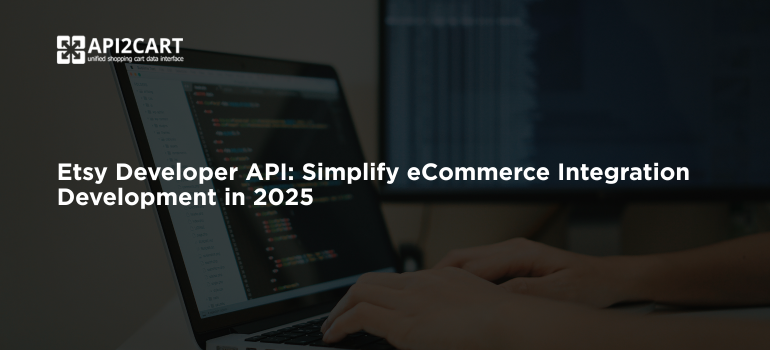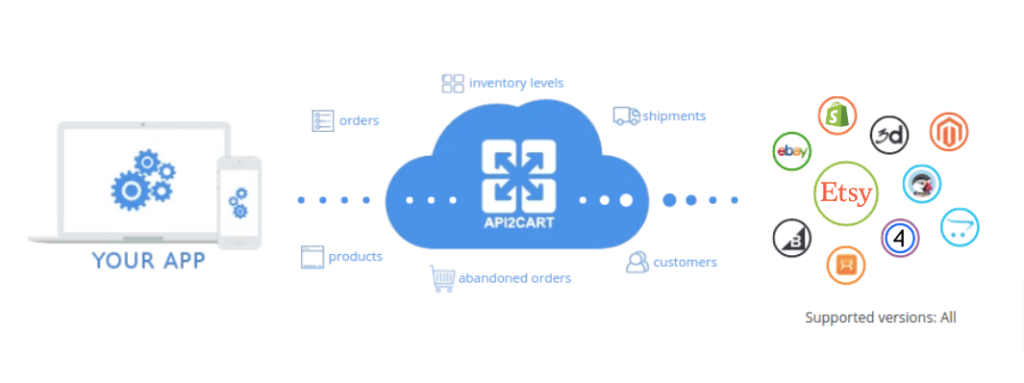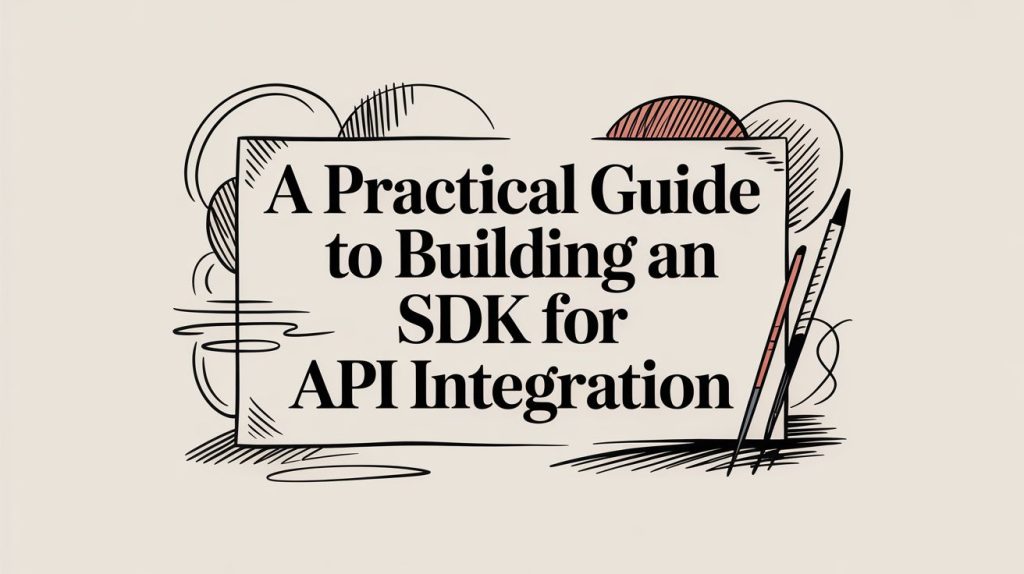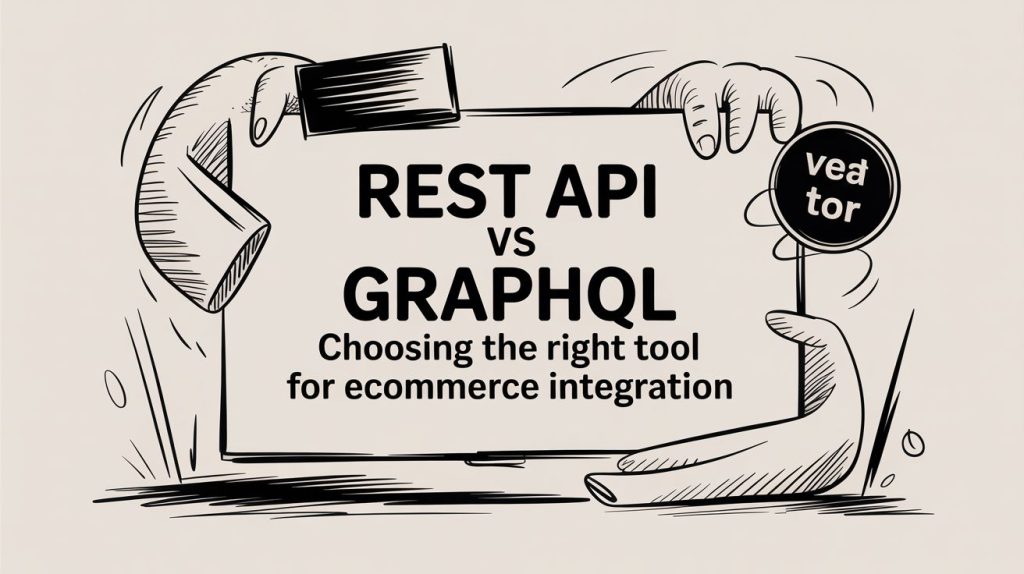
Etsy has become one of the largest online marketplaces of handmade, unique and vintage products in the world, with millions of active buyers and sellers all over the world. According to statistics, over 400 million active users visit Etsy every month. For software developers, the Etsy Developer API opens up opportunities for building and developing powerful applications and software that connect directly with the Etsy marketplace. By integrating with this API, you can access and manage important store data, including products, listings, orders, and customers, enabling multi-channel synchronization, inventory management, analytics, and more.
In this article, we’ll discuss how the Etsy Developer API works, what it offers for software developers, and how you can use the Etsy Developer API to create and develop robust, efficient and reliable eCommerce solutions. Whether you’re developing tools or SaaS applications for shopping platforms and marketplaces, understanding Etsy Developer API capabilities is the first step to unlocking seamless eCommerce integrations and delivering value to end users.
What is the Etsy Developer API?
The Etsy Developer API is a RESTful API which enables software developers to communicate with the Etsy platform programmatically. Basically, it uses standard HTTP methods, such as GET, POST, PUT, and DELETE, allowing software developers to perform CRUD (Create, Read, Update, Delete) operations. Generally, responses are returned in JSON format, which makes the integration process simple and compatible with most programming environments. The Etsy Developer API also provides access to critical store data, such as orders, products, customers, categories, inventory, shipments, and more.
Using this API, software developers can:
- Create and manage product listings;
- Retrieve details about stores and users;
- Access and update order and inventory information;
- Integrate Etsy data into third-party software.
The Etsy Developer API uses OAuth 2.0 for secure authentication and requires software developers to register applications through the Etsy Developer Portal. Generally, once authorized, your application can access a seller’s store data and perform various operations.

Advantages of Etsy Developer API
The Etsy Developer API offers a number of advantages that make it an effective solution for software developers who are building and developing eCommerce integrations. The following are the best benefits of integrating with Etsy Developer API:
1. Access to Store Data
The Etsy API gives developers direct access to various store data, such as categories, products, orders, inventory, customers, and others. This means that software developers can integrate Etsy data into their own software, whether it’s for order management, inventory tracking, shipping automation, or analytics.
2. Automation for Etsy Sellers
Integration with Etsy API allows eCommerce software to provide Etsy sellers functionality like automatically update stock levels, product listing, import orders or generate reports. This saves the repetitive manual work by Etsy merchants and assists them not to make costly errors, such as overselling.
3. Advanced Data Management Capabilities
The Etsy API also offers developers with robust methods and endpoints to CRUD (Create, Read, Update, Delete) significant store data, including orders, products, inventory, customers, shipments, etc. Such level of control enables software developers to build applications that are specific to the requirements of certain businesses.
4. Opportunity to Reach a Large Market
Etsy has millions of active sellers worldwide, offering a vast potential market for software developers creating eCommerce tools and applications. By offering integration with Etsy API, developers can tap into this growing market and provide solutions that are in high demand among Etsy merchants.

Challenges of Integration Development Process
Although the Etsy Developer API integration provides software developers with powerful opportunities, several technical and operational issues are still present in the development process.
Below are some of the key challenges:
1. API Rate Limits and Performance
In many cases developers need to be able to create and develop integrations that are able to cope with these limits without delays or data loss and this may need queueing systems or asynchronous processing in order to manage large volumes of data efficiently.
2. Authentication and Security Management
Etsy API is authenticated using OAuth 2.0 which is difficult to implement, particularly when dealing with multiple accounts of sellers. It is necessary to address the issue of token refresh, secure storage, and permission scopes properly to avoid unauthorized access and safeguard data privacy.
3. Data Structure Variations
Etsy’s data models differ from other marketplaces and shopping platforms. Mapping fields like order attributes, product variations, or customer details can be time-consuming when integrating with multi-platform systems.
4. API Versioning and Updates
Etsy regularly updates its API, changes endpoints or modifies data fields. The developers should remain updated with such changes and adjust their integrations to avoid disruption or failure of the depreciated methods.
5. Error Handling and Logging
The Etsy API can return various error codes due to invalid requests, expired tokens, or temporary service problems. Such problems must be automatically identified, documented, and corrected with the help of a reliable error handling and logging system.
Easy Solution for Integration with Etsy Developer API
Building integrations with the Etsy Developer API requires dealing with authentication, rate limits, version changes, and complex data mapping. However, by using unified solutions, such as API2Cart, software developers can streamline the integration process. They can reduce the maintenance workload. Also, they can scale integrations more efficiently across multiple platforms.
API2Cart offers a unified API that connects applications to Etsy and 60+ eCommerce platforms and marketplaces, including Shopify, Magento, WooCommerce, OpenCart, Wix, Shopee, TikTok Shop, and others, at once – all through a single integration. Also, it allows you to avoid all integration challenges and constantly monitors API changes, allowing software developers to focus on core product features instead of maintenance.

So, instead of spending months developing and maintaining separate integrations, developers can integrate once with API2Cart. Also, Software developers can manage and access Etsy’s store data. It includes orders, products, categories, shipments, and other information. They can use standardized API methods API methods without writing unique code for every platform from scratch.
Steps to implement integration with Etsy using API2Cart:
- Create an API2Cart account and add an Etsy store through the admin panel.
- Authenticate via API2Cart’s OAuth flow for Etsy.
- Use unified API methods to manage Etsy data:
- order.list — get list of orders;
- product.update — update product details;
- category.info — retrieve detailed information about a specific category;
- order.shipment.add — send or add tracking details for an order.
- Subscribe to webhooks to receive real-time updates on orders, products, and inventory changes.
- Extend easily — once connected through API2Cart, you can use the same integration logic to connect to other platforms supported by the service.
Thus, integrating with Etsy Developer API doesn’t have to be complicated. With API2Cart, you can connect your software to Etsy and many other eCommerce platforms through a unified API. Also, this unified approach saves time, minimizes maintenance expenses, and provides a scalable and easy Etsy integration development.
So, start your 14-day FREE trial today and see how API2Cart can simplify your Etsy API integration process right now!


